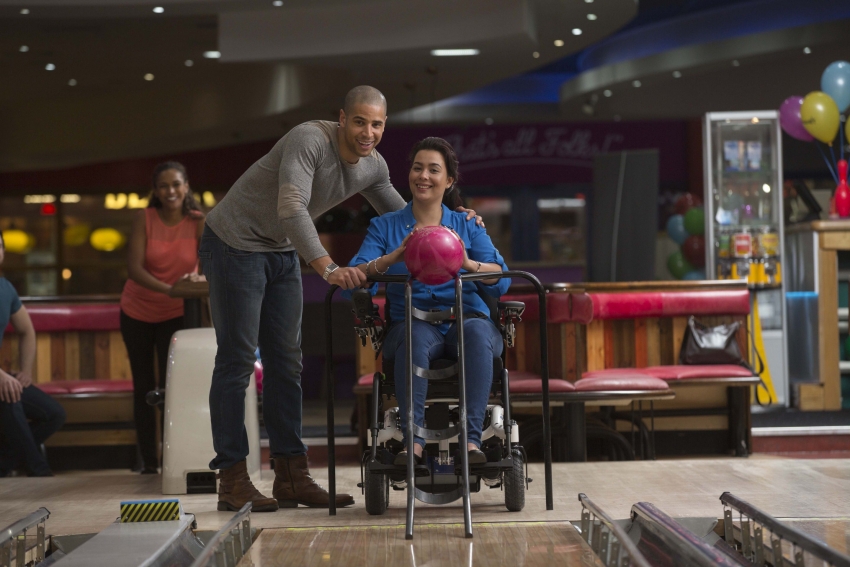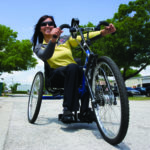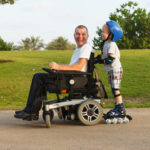Wheelchair Bowling Basics: Find Out The Rules!

Have you tried wheelchair bowling? Both power chairs and manual chairs are used for this adaptive sport, so everyone can have a chance to play with their friends. If you have a recent spinal cord injury and you used to bowl, I would encourage you to give wheelchair bowling a try. But first, there are a few things you need to know.
How Is Wheelchair Bowling Similar To Traditional Bowling?
Both types of bowling are played in a standard bowling lane. There’s no need to find a special facility to enjoy this sport. You can hang out at the bowling alley with all your buddies, whether they wheelchair users or not. Wheelchair bowling also uses a standard scoring system. No point adjustments necessary.
So What Are The Differences?
In wheelchair bowling, stick helpers are allowed. Stick helpers are individuals that can position the ball on the ramp (if used) and help place the bowler at the foul line. Helpers must not touch the ball after it has been positioned, and they must move away from the ball and bowler before delivery. Stick helpers are also required to wear regulation clothing.
Also, if you are playing in a tournament, and you have a personal emergency, you are allowed to delay the game. If you miss out on playing time, you can get up to thirty minutes of make-up time later.
It against the rules to use any device to steady your wheelchair. But, if you find it necessary to use a piece of adaptive equipment to play the game, you can submit a request to the Board of Directors in charge of the tournament you’re competing in.
Other Information
No rolling towards the lane! When you let go of the ball, you must be in a fixed position. You aren’t allowed to push yourself forward as you release the ball.
You don’t need any special accessories in order to bowl. While there are pieces of adaptive equipment you can buy to make it easier to hold the ball, you don’t have to purchase any equipment if you don’t need it.
Always call ahead when you are visiting a new bowling alley. Most alleys are wheelchair accessible, but some are more difficult to navigate than others. It’s a good idea to get information about accessibility before you leave home.
Author: Annie Beth Donahue is a professional writer with a health and disability focus.








